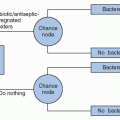TABLE 47.1 Potential Annual, National Impact of Mandatory Reporting and Disclosure of HAIs | |||||||||||||||||
|---|---|---|---|---|---|---|---|---|---|---|---|---|---|---|---|---|---|
|
Transparency, open exchange of information, and accountability are important societal values. At the heart of the consumer movement is the desire to diminish information asymmetry so that consumers are able to select providers of high-quality care. Consumer advocates argue that consumers currently do not have the data necessary to make decisions regarding their healthcare. Thus, release of HAI rates by all hospitals should empower consumers. When hospitals attempt to block disclosure, they risk the loss of trust by their patients because of the assumption made by many that the hospital must have something to hide. Conversely, when hospitals disclose their quality data, they pursue a transparent approach that demonstrates accountability to the public and honors the public’s right to know.
TABLE 47.2 Assumptions Underlying Mandatory Reporting and Public Disclosure of HAI Rates
1. Transparency, open exchange of information, and accountability are important societal values.
2. HAIs are preventable.
3. Valid data on HAI rates will be produced.
4. Consumers make rational decisions about choices in healthcare.
5. Consumers will understand and use data on HAI rates.
6. Consumers are able to choose their site of medical care and are willing to change their site of care.
7. Consumers who use HAI rate data will make decisions that will improve the quality of their care.
8. Market forces will provide incentive for hospitals to lower HAI rates.
9. Positive outcomes will outweigh negative unintended consequences.
10. Healthcare is a commodity.
HAIs are preventable. While the medical literature is replete with examples of how to prevent HAIs through best practices and technologic advances, the proportion of HAIs that can be prevented remains unknown. In the aforementioned systematic review by Umscheid and colleagues, it was estimated that ~65% to 70% of CA-UTI and CLA-BSI may be preventable, as well as 55% of cases of VAP (13); it is important to note that these are estimates and the true proportion of preventable HAIs is unknown.
Valid HAI data will be produced. Given the complexities of surveillance and the difficulties in risk adjustment, delivering valid data to consumers is not easy. Careful attention must be directed to surveillance methodology. This will require standardization of HAI case definitions, surveillance strategies, and data sources. Moreover, the data must be risk-adjusted to account for the severity of illness and the complexity of care offered at each hospital. Without risk adjustment, hospitals with the sickest patients will appear to be providing lower-quality care simply on the basis of higher crude HAI rates. Standardization and risk adjustment are imperative to produce meaningful interhospital comparisons. While this can be addressed in mandatory reporting legislation, arriving at valid risk adjustment remains extraordinarily difficult.
Consumers make rational decisions about choices in healthcare. In other words, do consumers make decisions regarding their healthcare that maximize their welfare? There has been little research focused on how patients reach such decisions; however, it seems likely that the more urgent the required treatment, the less likely that the patient will proceed with a rational, well-planned investigation of the options with regard to where to seek treatment. In the setting of a major health crisis, patients rely on the recommendations of their physicians, family members, and friends, and often need to reach decisions relatively quickly. A well-publicized, illustrative anecdote is the decision by former President Bill Clinton to have coronary artery bypass graft (CABG) surgery at the hospital in the State of New York with the highest mortality rate for that procedure (16).
Abraham and colleagues performed a survey of 467 patients from four Minnesota clinics that examined the factors of importance to healthcare consumers in choosing providers. They found that physician and healthcare organization reputation were of greatest importance, with logistic and contractual issues also being important. They found few survey respondents who indicated formal quality information sources to be important (17).
Consumers will understand and use reported data on HAI rates. It is important to realize that reports on healthcare quality are designed by experts and policy makers whose understanding of the healthcare system informs their decision on the specific indicators that should be used to measure quality. However, the end user of the data, the consumer, may not be able to work backward from the indicator to the bigger picture of quality (18). Overall, consumers have a poor understanding of quality of care indicators, and this is worse in patients with low socioeconomic status. A significant proportion of the population does not have the reading proficiency to understand quality report cards (19). Moreover, consumers do not use indicators that they do not understand (20).
Given that HAI rates are among the newest metrics to be released to consumers, it is unknown at this point how frequently these specific data are used by consumers. However, two reviews concluded that consumers rarely seek out this information and that it has a modest impact on medical decision making (21,22).
A recent Cochrane review by Ketelaar and colleagues examined the effect of publicly releasing performance data. These authors performed a systematic literature review that included four studies encompassing 1,560 hospitals and over 35,000 consumers. They found that there is “no consistent evidence that the public release of performance data changes consumer behavior or improves care” (7).
Although the public’s desire to access healthcare quality data may change as consumers become more educated, more data become available, and more individuals have access to and are more comfortable with online information sources, at the present time it appears that a minority of individuals are interested in these data and prefer the recommendations of their healthcare providers, family, and friends.
Consumers are able to choose their site of care and are willing to change their site of care. Many patients are unable to choose their site of care owing to their health insurance plan. Twenty-four percent of Americans are enrolled in health maintenance organizations (HMOs), and 95% of covered workers are enrolled in a managed care plan (i.e., HMO, preferred provider organization, or point-of-service plan) (23). Thus, a significant proportion of the population has little choice in healthcare venue or may have some choice that comes with financial penalty.
A recent analysis of New York CABG quality data from 1989 to 2002 showed that public reporting of hospital performance had no impact on changes in market share for hospitals (24). However, it could be argued that even if patients are unwilling to use healthcare quality reports or change their site of care, third-party payers will use the data to direct their members to hospitals that demonstrate higher quality. There is also little evidence to date, however, to support that argument (24,25,26,27). It also could be argued that if public reporting is effective in improving the overall quality of care in a given state, even patients who are unwilling to change their site of care may experience a benefit (28).
Consumers who use data reported on HAIs will make decisions that will improve their care. This assumption depends on two other assumptions: that comparative data on hospital HAI rates are valid and that healthcare consumers can and will change their site of care in response to the reported data.
Stay updated, free articles. Join our Telegram channel

Full access? Get Clinical Tree






